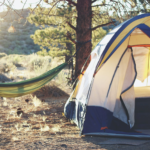Learn all you need to know about scattered camping, also known as free camping, in this guide on dispersed camping. Dispersed camping is also known as free camping. Neither bookings, permissions nor money are required!
It’s not really clear to me what “dispersed camping” means.
Dispersed camping does not need reservations or on-site amenities like flush toilets, running water, or electricity. If you’ve done your research and found a great spot for dispersed camping, you’re unlikely to come across any other campers. If you’ve been trying to pinpoint a great vacation in Colorado, you might want to start on this website.
Camping in the Red Feather Lakes area of Colorado
To avoid the difficulty of finding and securing a particular area for their stay, campers choose to camp in a scattered way. This may need driving up a forest access road, finding a parking spot, and setting up camp. You now have your own personal area, so set up your sleeping arrangements, whether they be an RV, tent, or hammock.
In the mountains, there is an alternative method of finding lodging that doesn’t need a reservation: Backpacking into the mountains and securing a spot. This article will not cover the subject of backpacking.
Dispersed-Camping Regulations
As with any activity involving public access, such camping is subject to restrictions, thus this shouldn’t come as a surprise.
Location
Unless you meet certain criteria, you cannot simply pitch your tent wherever in Colorado’s dispersed camping places.
Dispersed-Camping Regulations
Camping near trailheads, established campgrounds, day-use picnic spots or popular locations is strictly forbidden, making it very hard to disobey this law.
Camping is not allowed on private property. Within the bounds of state and national forests, there is, in reality, privately held land. You’ll want to check out these several map options to discover where you may camp legally. Maps are a great friend.
In the vicinity of Crested Butte, there are a number of campgrounds.
Rocky Mountain National Park does not allow dispersed camping since it falls under federal control. Backcountry camping in Rocky Mountain National Park requires a permit. You’ll need to travel or carry a bag to get to these campsites.
How long can you stay here?
In the majority of Colorado, you are not allowed to stay in the same place for more than 14 days. Additional restrictions include a maximum stay of 30 days within a 20-mile radius.
The answer is yes, you can have a campfire.
The conditions must be perfect if you want to enjoy a campfire in the state of Colorado at any time. Having a campfire is best done under the following conditions: A large fire pit, no wind, and a small fire are all you need for a successful campfire. Regardless, everything is still possible despite the current situation.
- Fire regulations are covered in this article.
- This page also covers all of the restrictions.
What is the best way to find a designated camping area?
Some of the more dispersed campsites, especially those in areas where people walk a lot, will be labeled with a number. There are, however, exceptions to this rule. To be honest, it’s remarkable to come across an actual campsite that clearly advertises its purpose as a place to spend the night. You can tell a scattered campground because it has a flat surface, the dirt is worn, and there is likely to be a fire pit made of rocks.



